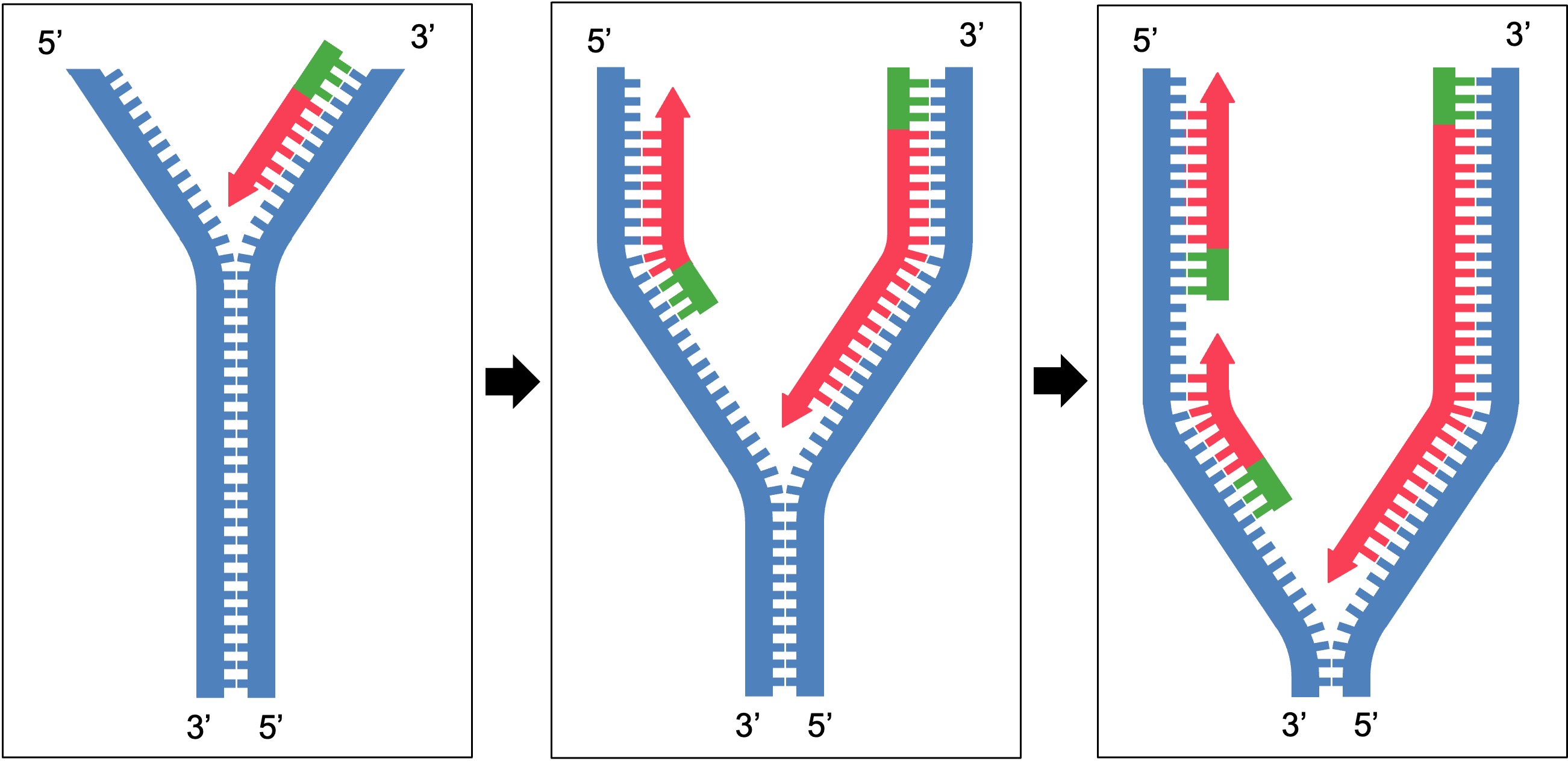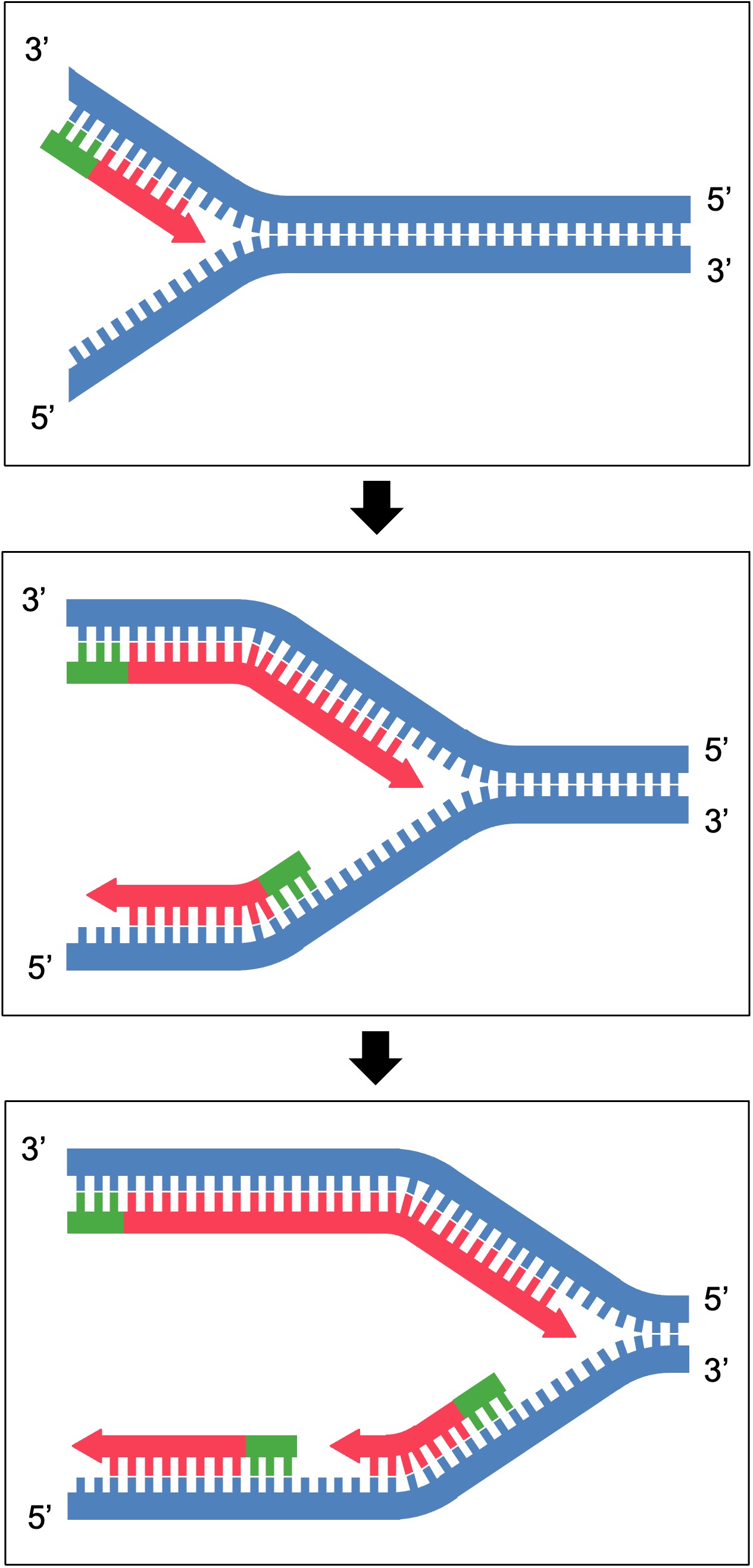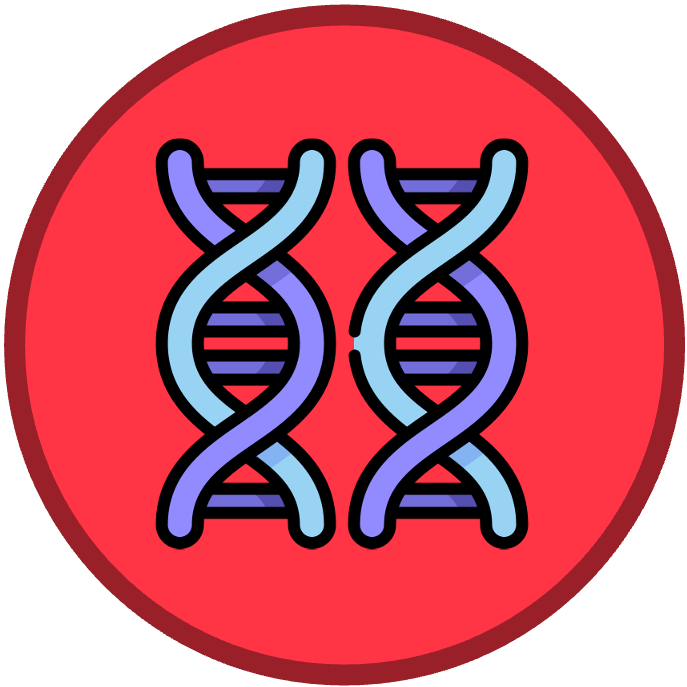

Okazaki Fragments
DNA polymerase cannot initiate replication, it can only add new nucleotides to an existing strand
-
For DNA replication to occur, an RNA primer must first be synthesised to provide an attachment point for DNA polymerase
-
DNA polymerase then adds nucleotides to the 3’ end of a primer, extending the new chain in a 5’ → 3’ direction
Leading versus Lagging Strands
Because double-stranded DNA is antiparallel, DNA polymerase must move in opposite directions on the two strands
-
On the leading strand, DNA polymerase is moving towards the replication fork and so can copy continuously
-
On the lagging strand, DNA polymerase is moving away from the replication fork, meaning copying is discontinuous
-
As DNA polymerase is moving away from helicase, it must constantly return to copy newly separated stretches of DNA
-
This means the lagging strand is copied as a series of short fragments (Okazaki fragments), each preceded by a primer
-
The primers are replaced with DNA bases and the fragments joined together by a combination of DNA pol I and DNA ligase
-
Okazaki Fragments







